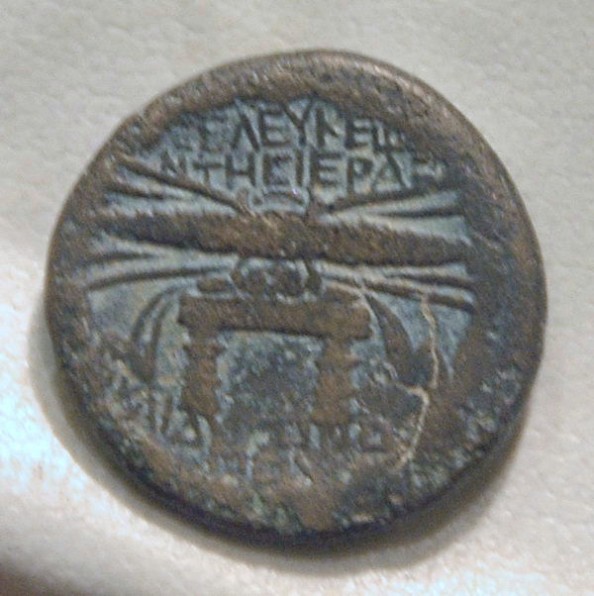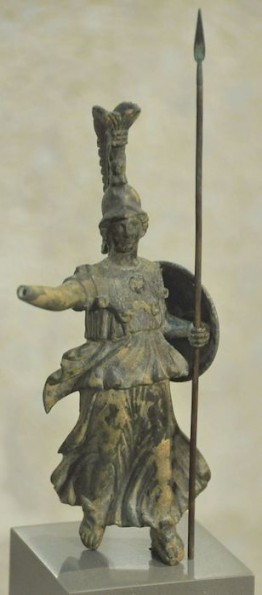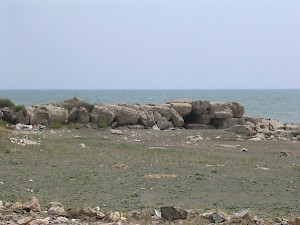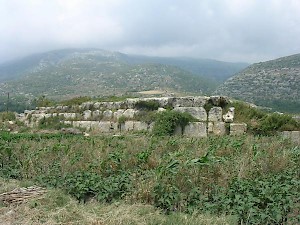Seleucia in Pieria
Q1605894Seleucia in Pieria or Seleucia by the Sea: port in Syria, one of the four cities of the Syrian tetrapolis. The modern name is Çevlik, a village near Samandağ. The city is not to be confused with Seleucia on the Tigris or Seleucia on the Euphrates.

Seleucia was founded in 300 BCE by Seleucus I Nicator, one of the successors of the Macedonian conqueror Alexander the Great and the founder of the Seleucid empire. Appian of Alexandria says that when Seleucus was about to build the city "a portent of thunder preceded the foundation, for which reason he consecrated thunder as a divinity of the place. Accordingly the inhabitants worship thunder and sing its praises to this day".note Diodorus says that the inhabitants were brought in from another Hellenistic town, Antigonia.note
Seleucia was part of the "Syrian tetrapolis" (four Syrian cities); the other three towns were Antioch, Apamea, and Laodicea. Seleucia was to be the capital of his realm and the equal of Alexandria. However, the Seleucids temporarily lost Seleucia to the Ptolemies after the Laodicean War (also known as the Third Syrian War; 246-241).

The city was recovered by king Antiochus III the Great during the Fourth Syrian War (219-217) and eclipsed Alexandria near Issus as main port of Syria, but by now, Antioch had become the most important city in the Seleucid empire. The city was usually ruled from Antioch, but in 109, when control of the city was contested between Antiochus VIII Grypus and Antiochus IX Cyzicenus, it gained some independence.
When the Seleucid Empire was subdued by the Armenian conqueror Tigranes II, Seleucia resisted the attacks, and when the Roman general Pompey the Great restored the Seleucids to power, he rewarded Seleucia by allowing it de facto independence: he gave the city to Antiochus I Theos of Commagene, whose kingdom was at some distance, which gave the city substantial autonomy.note Probably, the Roman was not above plundering the town, because we know that a statue of Apollo, once in Seleucia, was later to be seen in a temple in Rome.note
Pompey's contemporary Posidonius mentions an asphaltic vine-earth that was mined near Seleucia, and could be used as an insecticide.note

The city was built, a bit north of the estuary of the Orontes, between small rivers on the western slopes of the Coryphaeus, one of the southern summits of the Amanus Mountains. The Macedonians called this region Pieria, after a district in their homeland that was also between the sea and a mountain range (the Olympus). It had at least two ports (the "inner harbor" and "outer harbor"), which were sometimes used by the Roman navy. However, the harbors continued to be silted up. Several emperors ordered canals to be dug to prevent this process, but in the end, this was in vain.
One of these canals was, according to Flavius Josephus, dug by Jewish slaves, working under orders of the Roman commander Titus, who had captured Jerusalem in 70 (other POWs were sent to Rome, where they had to build the Colosseum). It is almost 1400 meters long and a part of it runs through a tunnel that was designed by engineers of the Tenth legion Fretensis. According to an inscription, it was not finished until the reign of Antoninus Pius (138-161). The last workers were legionaries of IIII Scythica and XVI Flavia Firma. Theirs was not the last attempt to improve the harbors, however: according to the fourth-century Descriptio Totius Orbis, the ports were renewed again by the emperor Constantius II (r. 337-361).

This proves that the city was important. another indication is that one of the Seleucians, a man named Firmus, could usurp the imperial purple during the reign of Aurelian.note By then, the city had already become Christian. A bishop of Seleucia was present at the Council of Nicaea (325).
In the fifth century, the fight against the silting was finally given up. It is possible that manpower was short after the city had been looted by Isauran brigands in 403. The city suffered from heavy earthquakes in 526 and 528,note and never recovered. Twelve year laters, the Sasanians could capture the city, which was no longer defended.